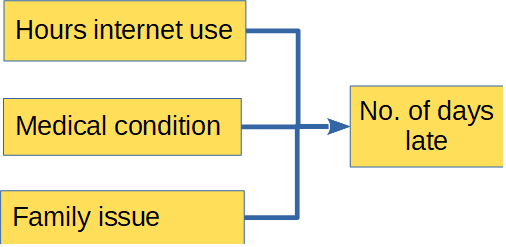How can a mind map assist you in formulating your conceptual framework? This article explains and provides examples on how this practical tool is used in research.
It takes considerable time to figure out an appropriate conceptual framework for a study. The difficulty partly arises from a person’s unfamiliarity with the topic at hand. Hence, the following article on how to use the mind map can make the process of conceptual framework development easier.
Identify the Knowledge Gap
One of the first things one should do when conducting meaningful research is to identify knowledge gap in the selected topic. However, unless you make a thorough review of the literature, it is easier said than done. A comprehensive review of the literature is one where you can see clearly what aspects of the topic have not been studied yet.
How can you systematically undertake such a thorough review of the literature and identify where the gap exists?
Mind Map: A Literature Review Tool
Mind mapping the topic while reading the literature helps. Find a central issue, most sensibly the dependent variable, which is the focus of the research.
For example, a teacher may be interested in finding out why students in his or her class come to class late. Tardiness is not a unique phenomenon that the teacher can claim to be the first to identify. Some other teacher-researchers may have already looked into the problem in other places. Hence, a review of the literature of factors affecting tardiness can already be made during mind mapping.
It is possible, however, that the root cause of the problem in other places may not exist in the specific situation where the teacher carries out her tasks. Or, even after instituting new policies based on the review of factors affecting tardiness, the issue is not resolved. There may be a factor or set of factors that influence the students’ prompt arrival in class. Thus, mind mapping organizes your thoughts.
Example of a Mind Map
An example mind map may look like Figure 1 below where the central theme, tardiness, is the main topic. You may add the number of literature that supports particular predictor variables.

The mind map shows that many studies have been done on the effect of predictor variables on tardiness. Further, among the predictor variables studied, several independent variables have been identified as significant predictors of tardiness. As not all of the predictor variables are accounted for in one study, there may be other variables at play which may have been left unstudied. The mind mapping process shows the information gaps.
Example Conceptual Framework
For example, during a parent-teacher meeting, several parents raised the problem of internet overuse among their children. As an insight from the meeting, the teacher thought that internet use might be one of the reasons why pupils come to class late. Students tend to sleep late at night or early in the morning, playing online games.
From the mind map given in Figure 1, note that one of the factors identified is internet use as a predictor of sleep quality which in turn affects tardiness. Thus, a conceptual framework emphasizing the use of the internet plus two other significant predictors of tardiness may serve as study guide. Figure 2 shows the paradigm of such study. Internet use is highlighted as one of the independent variables.

The e-book on conceptual framework development featured in this site provides more detailed examples focused on other research topics.
References
Gemmill, E. L. and M. Peterson (2006). Technology use among college students: implications for student affairs professionals. Retrieved on October 20, 2019 from https://tinyurl.com/y2cks6dk
Mizan, S. S. and D. G. Shendell (2011). Absence, extended absence, and repeat tardiness related to asthma status among elementary school children. Retrieved on October 20, 2019 from https://tinyurl.com/y6rfl5l6
[cite]

Am grateful……am working on a thesis with the title ” the perception of the Ghanaian artist towards the utilization of digital technologies in the production of art” please I will like you to assist me with the conceptual framework.
Dear Salifu, please see this dissertation related to your topic: https://etd.ohiolink.edu/pg_10?0::NO:10:P10_ACCESSION_NUM:ohiou1443101832#abstract-files
I hope it helps.